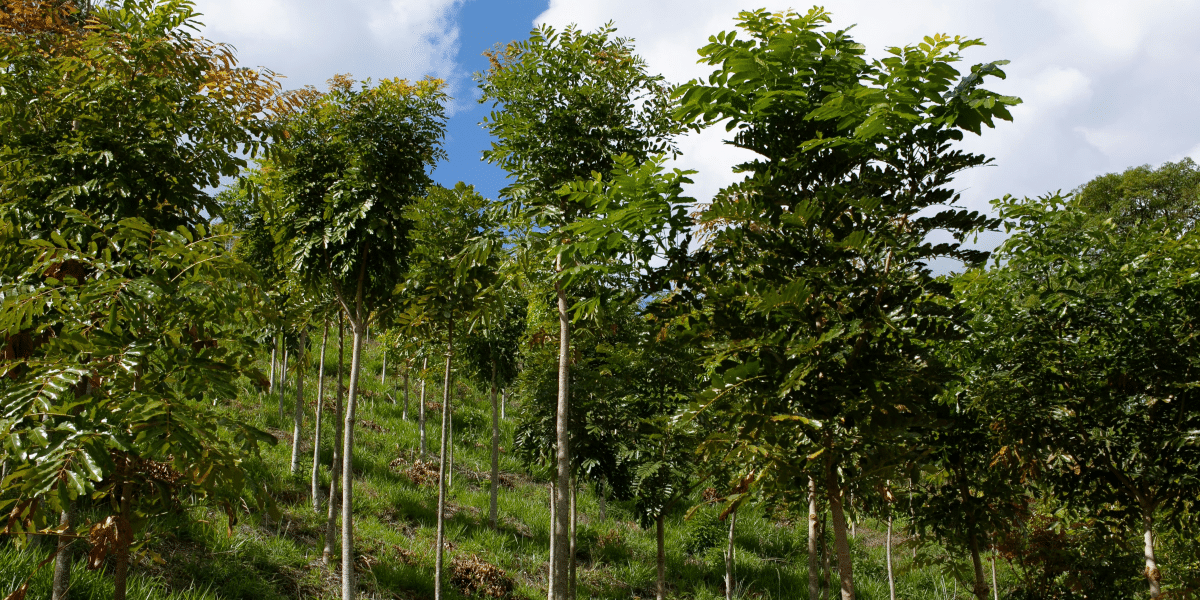Forests support biodiversity, absorb carbon dioxide, and regulate the Earth’s climate. However, deforestation has taken a severe toll on global ecosystems, with millions of acres of forest lost each year to agriculture, logging, and urban expansion. In response, countries, communities, and environmental organizations worldwide are launching reforestation initiatives to restore these vital ecosystems. Here’s a look at how reforestation efforts around the world are helping heal the planet and why they’re essential for a sustainable future.
The Importance of Forests for Climate and Biodiversity
Forests are often called the “lungs of the Earth” for their ability to absorb carbon dioxide and release oxygen. Trees play a key role in combating climate change by capturing CO₂, helping reduce the greenhouse gases contributing to global warming. Forests also provide habitats for more than half of the world’s species, making them vital for preserving biodiversity.
However, large-scale deforestation has devastated ecosystems and disrupted weather patterns. The Amazon rainforest, often called the world’s largest carbon sink, has recently seen record-breaking deforestation rates. The loss of forests threatens wildlife and human communities that rely on forest resources for food, medicine, and livelihood. Reforestation is becoming an essential tool in restoring these critical ecosystems and supporting biodiversity and climate health.
Technology and Innovation in Reforestation
Modern technology is revolutionizing reforestation efforts, making restoring forests faster and more efficient. Drone technology, for instance, is being used to plant seeds in difficult-to-reach areas. Companies like BioCarbon Engineering use drones to disperse seed pods over large areas, allowing for rapid replanting on a massive scale. Drone-based reforestation can plant thousands of trees daily, making it an ideal solution for areas devastated by wildfires or logging.
In addition to drones, satellite imagery, and AI are helping track the progress of reforestation projects, monitor forest health, and identify the best areas for planting. By combining technology with traditional methods, reforestation efforts can be more targeted and effective, ensuring trees are planted where they’ll thrive and contribute to healthy ecosystems.
Community-Led Reforestation and Agroforestry
Community-led reforestation initiatives are emerging as a powerful tool for environmental restoration. Local communities often have unique knowledge of their environments, allowing them to plant native species that support biodiversity and withstand local climate conditions. In countries like Brazil, indigenous communities are taking the lead in replanting degraded areas of the Amazon rainforest, ensuring that traditional knowledge is integrated into restoration efforts.
Agroforestry, a practice that combines agriculture with tree planting, is also gaining popularity. Farmers can improve soil health, enhance biodiversity, and create more sustainable farming systems by planting trees alongside crops. Agroforestry is being widely adopted in Central and South America, where it supports local farmers and reduces the need for harmful pesticides and fertilizers. Community-led reforestation and agroforestry empower people to take charge of environmental restoration while enhancing their livelihoods.
Corporate Involvement in Reforestation
As sustainability becomes a business priority, many corporations support reforestation as part of their environmental commitments. Companies like Microsoft, Amazon, and Unilever are investing in reforestation projects to offset their carbon emissions. Microsoft, for example, has pledged to become carbon-negative by 2030 and is funding reforestation as part of this goal.
Corporate involvement in reforestation has sparked discussions about “greenwashing,” or promoting an environmentally friendly image without genuine action. Many companies are working with third-party organizations to address these concerns and ensure their contributions make a real impact. When done transparently and responsibly, corporate-funded reforestation can be valuable to global environmental efforts, providing the necessary funding for large-scale projects that benefit ecosystems and communities.
Challenges in Reforestation Efforts
While reforestation is a promising solution, it faces several challenges. One of the main concerns is ensuring that planted trees survive and grow to maturity. Newly planted trees are vulnerable to drought, pests, and fires, which can undermine reforestation projects if not carefully managed. Maintenance and monitoring are essential to protect young trees and ensure they become thriving forests.
The Future of Reforestation and Forest Conservation
As the effects of climate change intensify, forests’ crucial role in regulating the planet’s health has never been more critical. Reforestation and conservation efforts to protect existing forests will be essential for combating climate change and preserving biodiversity. Organizations like the World Wildlife Fund (WWF) and Conservation International are working to protect remaining forests while supporting reforestation to restore damaged ecosystems.
For individuals, supporting reforestation can be as simple as contributing to organizations dedicated to tree planting or reducing paper and wood consumption to protect existing forests. When combined with global reforestation efforts, small actions contribute to a collective movement that promotes a healthier planet.
Planting Seeds for a Sustainable Future
Reforestation offers a powerful solution to some of the world’s most pressing environmental challenges. As countries, corporations, and communities unite to restore forests, they’re planting more than just trees—investing in a sustainable future. By reimagining our relationship with nature, reforestation efforts are helping to heal ecosystems, support biodiversity, and build resilience against climate change. Together, we can create a greener, more sustainable world, one tree at a time.
Published by: Khy Talara








